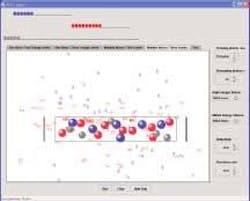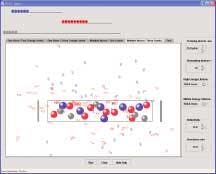Effective science teaching requires a scientific teaching method
The biennial international conference on Education and Training in Optics and Photonics (ETOP) was held concurrently with this year's annual meeting of the Optical Society of America. Carl Wieman, a Nobel laureate, JILA Fellow and University of Colorado (Boulder) physics professor, opened the ETOP conference with a plenary suggestion that it is perhaps time to abandon traditional monastic methodologies for teaching science and to adopt scientific methods instead (see "Hands-On Optics grant targets middle-school students," below).
Throughout most of history, the focus of technical education has been on replacing the next generation of scientists and engineers, but this has changed in the last few decades, he said. "Now the educational focus needs to shift to creating a scientifically literate public. Doing so is in the enlightened self interest of scientists who need public support for research, supports an economy based on advanced technology, and may enhance prospects for human survival in a world that can be profoundly affected by how people decide to use technology. The focus now needs to be on changing problem-solving approaches from those of novices to those of experts—like scientists," Wieman said.
Quantitative tools can measure the differences, he noted. "The novice sees science as pieces of information to memorize. So the novice simply memorizes and uses equations as if they were black boxes. The expert, however, has a coherent conceptual picture and a systematic approach that is useful in many contexts," he said.
Scientific approach
To get students to think like scientists , the teaching also must, like science, have well-defined goals and metrics of achievement. "I'm not talking about standardized tests," Wieman emphasized. Each teacher, instead, needs to take a scientific approach based on defining goals, getting unbiased data to assess results, knowing initial conditions (which means understanding the students), making use of technology, and learning from past research.
The scientific approach to teaching is particularly important in science classes, partially because research has shown that instructors in science courses are usually poor at knowing what their students are learning or not learning, he said. "Most physics courses move students away from expert and toward novice attitudes about science and problem solving. If you measure students at the start of a science class they are more like experts when they come in than when they leave at the end."
A major portion of Wieman's talk was devoted to sharing results that he has achieved while teaching an algebra-based introductory physics course for nonscientists and nonengineers. "The course population represents the population that we need to reach, and doing many things based on research findings has helped to make a much more successful physics course," he said. "The students spend about twice as much time on homework as they used to spend and enrollment for the class has tripled."
He emphasized the importance of goal-setting and measuring results for learning. "Saying, 'I want the student to understand ray optics' would be a poorly chosen goal because it is impossible to measure whether it has been met," he said. But being able to design a lens system for a camera would be a better goal because it is specific and measurable.
To produce learning materials that use technology to help improve teaching, Wieman and colleagues have established a Physics Education and Technology project at the University of Colorado (see figure).1
"Physics is ahead of many other disciplines in developing teaching approaches based on research, but most of work has been done in mechanics," he said. "We are just getting started in optics."
REFERENCE
- www.colorado.edu/physics/phet/home-page.html
Hands-On Optics grant targets middle-school students
The National Science Foundation (NSF) has awarded a $1.7 million grant to the International Society for Optical Engineering (SPIE), the Optical Society of America (OSA), the Math, Engineering, Science and Achievement (MESA) Program and the National Optical Astronomy Observatory (NOAO) to implement a national middle school science education program, dubbed Hands-On Optics (HOO): Making an Impact with Light.
The three-year informal science program seeks to bring optics education to underserved students by connecting optics industry volunteers with teachers and individual students. HOO will reach out to female and minority populations currently under-represented in the science and technology workforce.
The pilot HOO program was being developed in October to consist of optics-related modules for after-school programs, weekend sessions, summer camps and family workshops. Typical HOO projects are expected to include activities such as building kaleidoscopes and pinhole cameras or creating holograms.
NOAO will be charged with the training of teachers and optics-industry volunteers, as well as the development HOO project kits. Instructors for MESA will implement HOO initially in California, Washington, and Arizona. Expansion to selected sites across the country is expected to occur in 2005 and 2006.
–HJB

